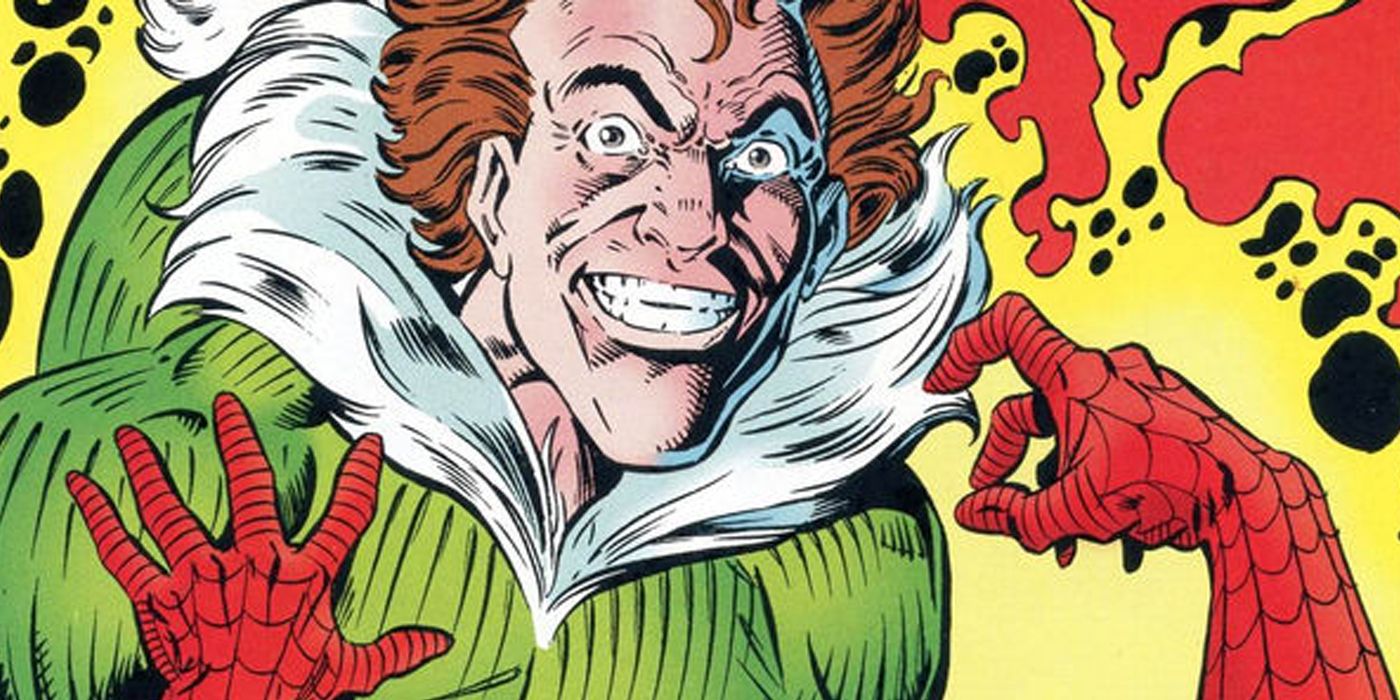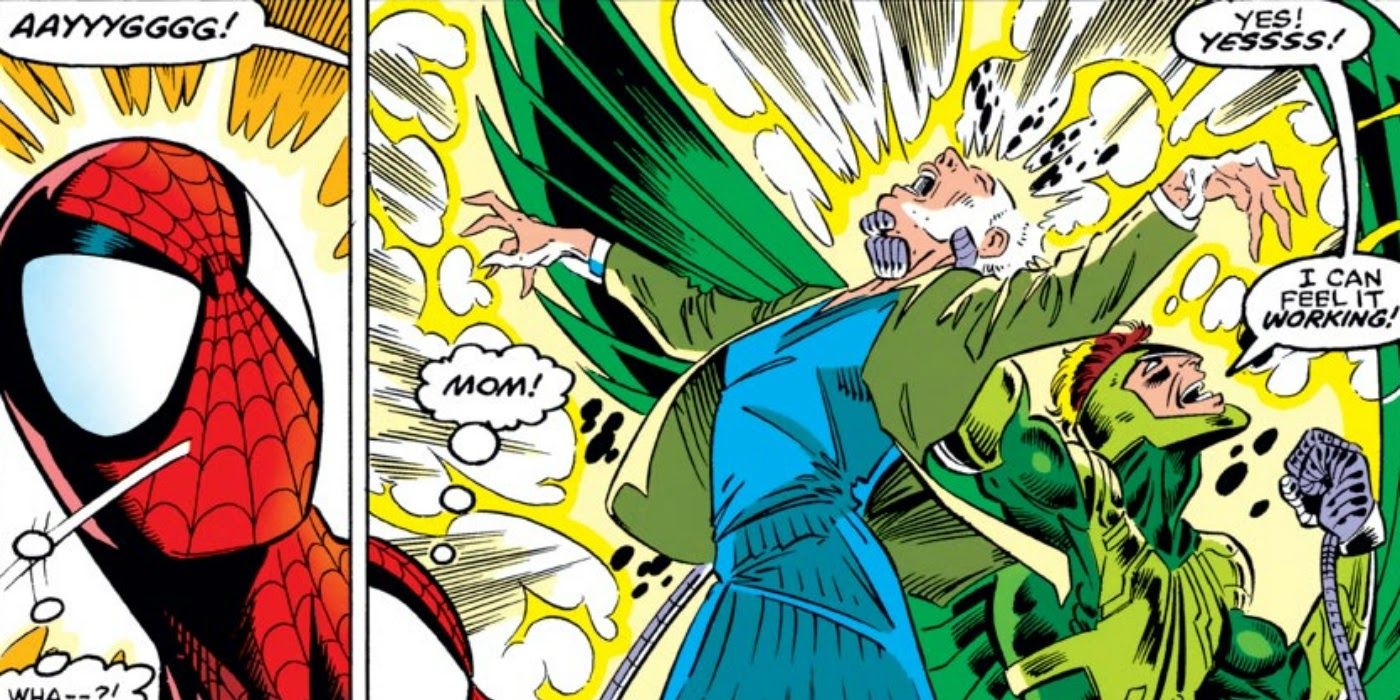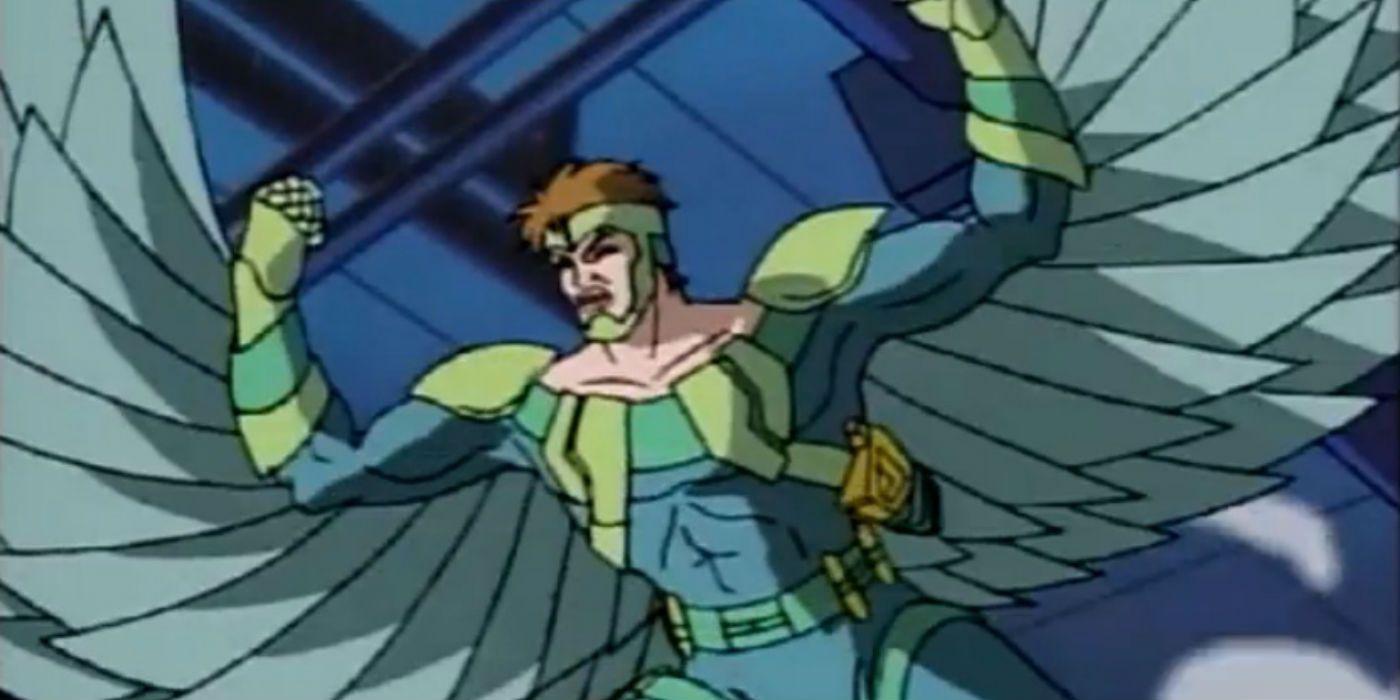
While quite dangerous, The Vulture has often portrayed as a fragile old man with a pair of wings. Compared to the rest of Spider-Man's villains, Adrian Toomes is a bit past his prime. The Vulture got a new lease on life, however, when he briefly regained his youth.
Toomes' quest for youth began in The Amazing Spider-Man #386, by David Micheline, Mark Bagley, Randy Emberlin and Bob Share. This story, titled "Lifetheft," began as the Vulture escaped prison once again. Toomes held a particularly strong vendetta against Spider-Man, especially since he was dying of cancer and the web-slinger refused to let him die quickly.
Meanwhile, at Empire State University, Dr. Benita Sanchez was working on a machine called the Juvenator, which could affect human aging. The Vulture attempted to steal this device, resulting in a brawl with the wall-crawler. When Toomes tried to use the Juvenator to steal Dr. Sanchez's life force, Spider-Man stepped in. Unfortunately for the web-head, the Vulture turned the device on him, stealing Spider-Man's youth.

Indeed, Toomes became young again, re-growing his natural hair and freeing himself from cancer. Simultaneously, Spider-Man was old and decrepit. While The Vulture was filled with excitement, his newfound youth was only temporary, as he and Spider-Man soon reverted to their natural ages. The Vulture then followed another criminal who stole the Juvenator, later revealing himself to be the Chameleon.
The villain was trying to become a major New York crime lord and brought Toomes in on his schemes. The Chameleon told the Vulture that the Juvenator's effects would be permanent if he stole artificial life-force. With this knowledge, Toomes later drained the life-force from a duplicate of Peter Parker's mother, Mary. Despite becoming permanently young, the Vulture was sent into a zombified state.
Yet in The Sensational Spider-Man #16 by Todd DeZago, Mike Wieringo, Richard Case and Gregory Wright, the Vulture's mind had returned. Furthermore, Toomes was attempting to kill anyone who he'd known as an old man in order to wipe his slate clean. As a result, the Vulture got into a fight with a new Prowler, mistaking him for Hobie Brown, the original.
This battle also drew in Spider-Man. While the heroes triumphed over Toomes, the Prowler was injured, forcing the web-slinger to take him to a hospital. The Vulture managed to escape, returning later to finish Spider-Man off. During this attack, David Kalen, a man capable of dissolving anything he touched, grabbed hold of Toomes. Kalen used his power to revert the Vulture to his older state, ending this period of youth.

It's worth mentioning that this character arc was a major part of Toomes' appearances in Spider-Man: The Animated Series. Instead of the Juvenator machine, however, this version of the Vulture used the Tablet of Time to create a device that could temporarily siphon the youth from others.
Toomes absorbed Spider-Man's youth much like in the original "Lifetheft" storyline. The major difference this time was that Toomes also absorbed the wall-crawler's mutation disease, turning into Man-Spider. When the two reverted to their natural ages, the Vulture remained a monstrous arachnid. Toomes eventually found a way to cure himself later in the series.
The Vulture then swapped ages with an infant Silvermane. While Toomes became permanently young, Silvermane returned to his original state as an old man. This version of the Vulture never returned to his old age, unlike his comic book counterpart.
The Vulture had a good run as a young man, but he inevitably reverted to the old man that readers know and love.
0 Comments